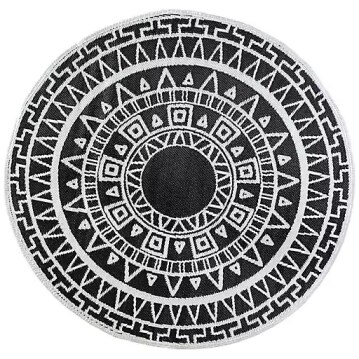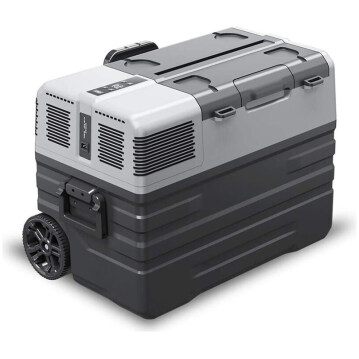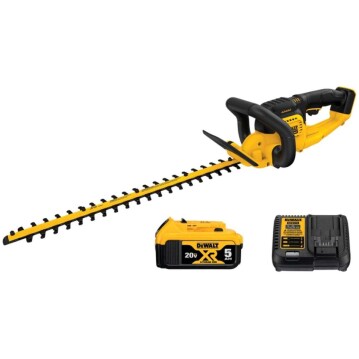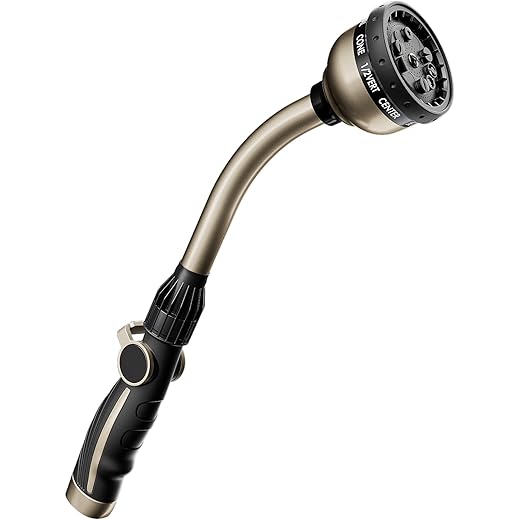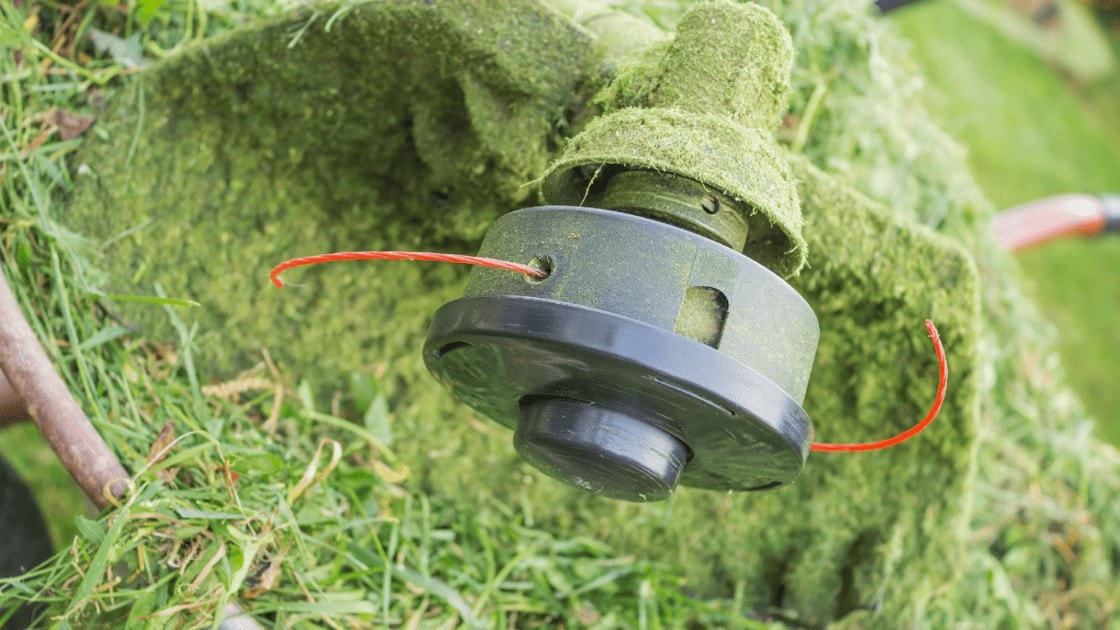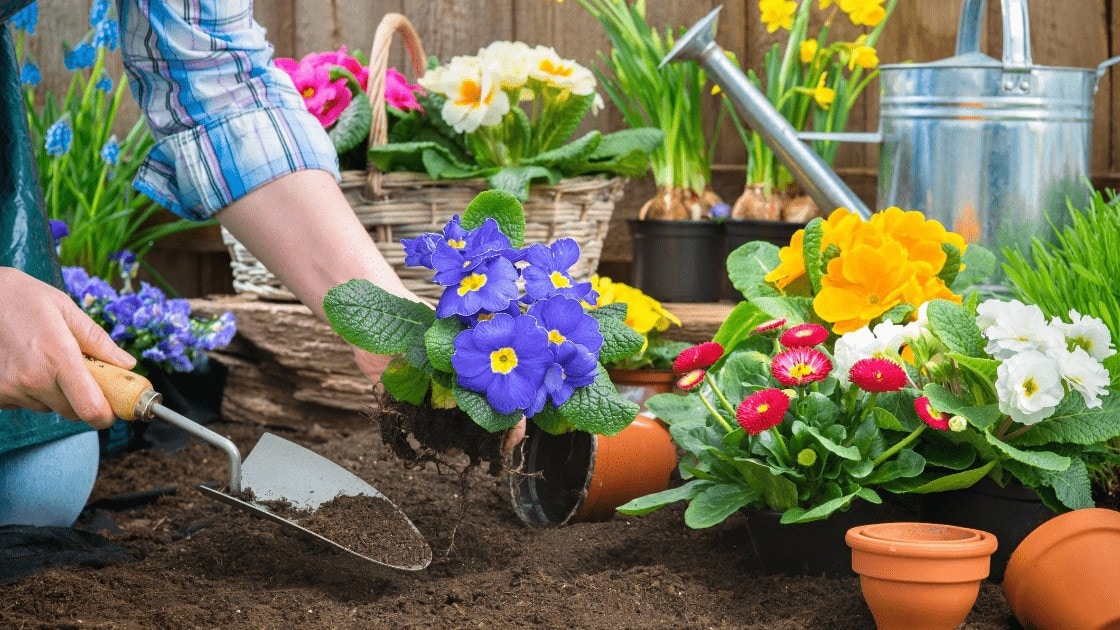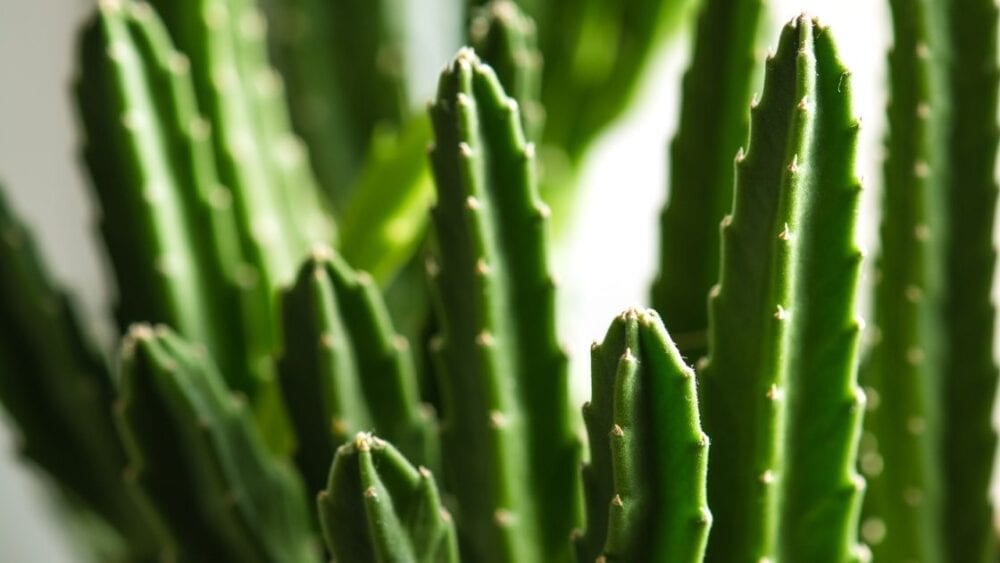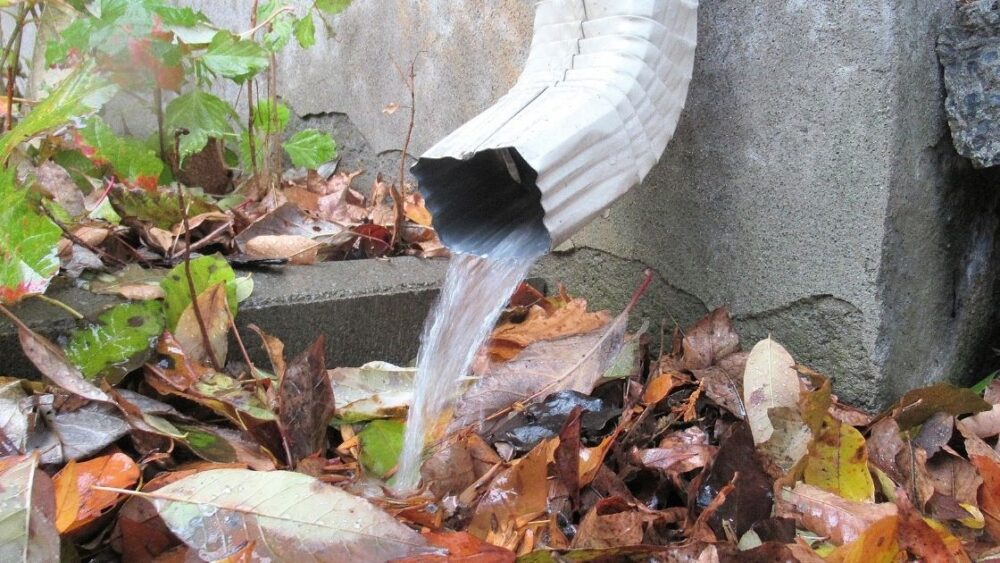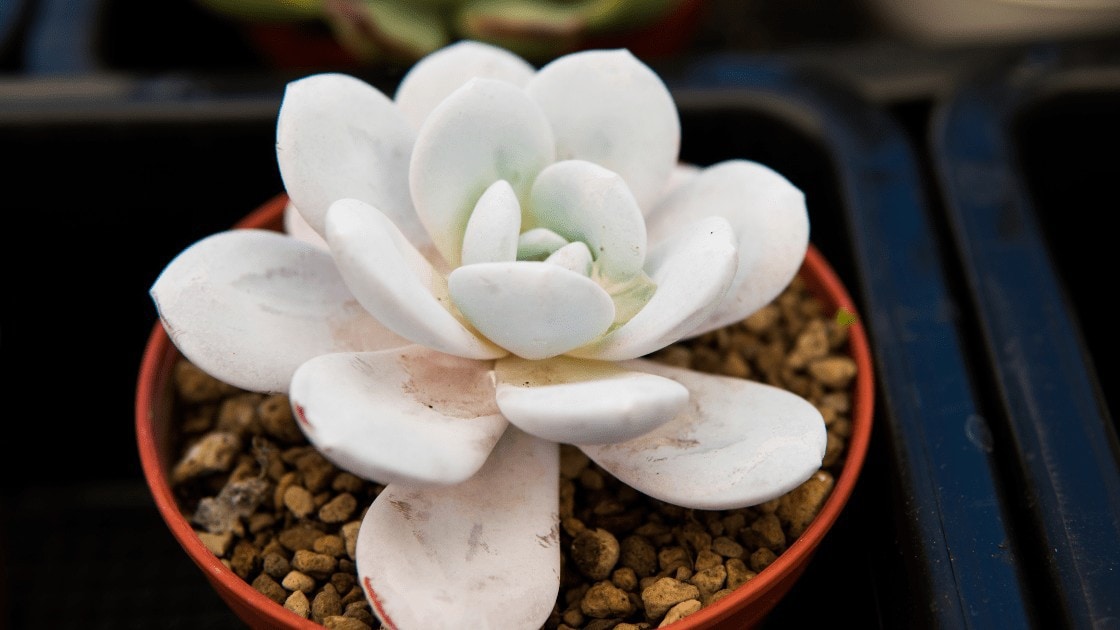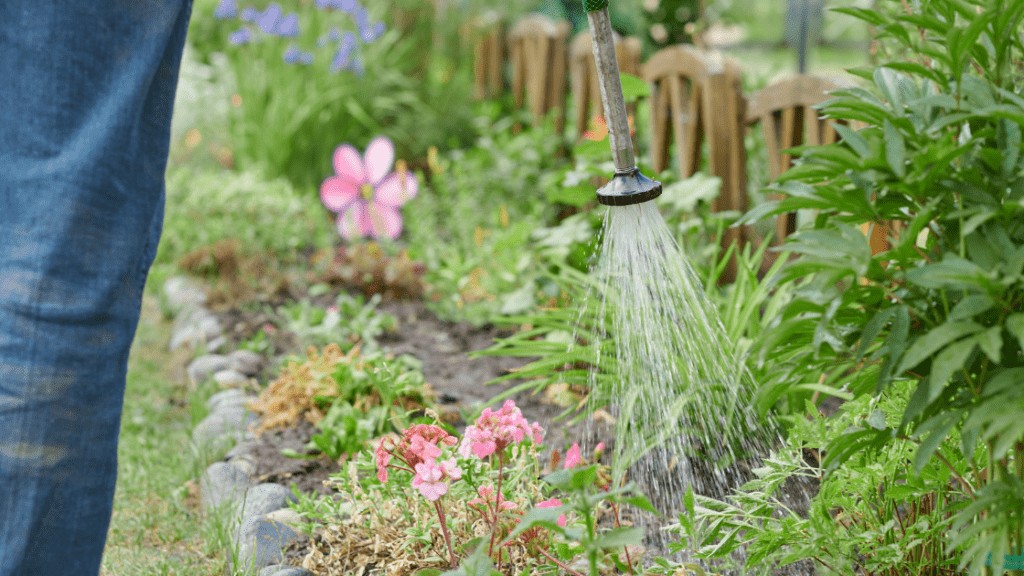
Spray nozzles and watering wands are very similar – they both attach to the end of a hose and both have a ‘trigger’, which allows you to easily turn the water stream on and off. Although each disperse water, one gives a rainfall effect, while the other produces a pressurized stream. In this article, we’ll discuss the pros and cons of water wands and spray nozzles and help you decide which is the right one for you.
When it comes to watering plants, water wands and spray nozzles are seemingly interchangeable – anything that a watering wand can do, a spray nozzle can do as well. However, because a water wand lets you easily water the top of the soil without getting the foliage of the plant wet, it can be an indispensable tool for your garden.
The usefulness of water wands over spray nozzles will usually depend on the type of plants in your garden, their height and their water demands. For watering tall shrubs for example, it certainly wouldn’t make a difference whether you use a wand or a nozzle – it’s easy to keep the foliage of the plant dry regardless. If your garden is full of gentle, low-growing flowering plants however, or most of the plants are sitting in pots, a water wand can be of great help and save you a lot of crouching and bending over.
Browse our Affiliate Products
Although there are many choices one can possibly choose from, it all comes down to preference, and garden layout.
What Is A Spray Nozzle and What Are They Useful For?
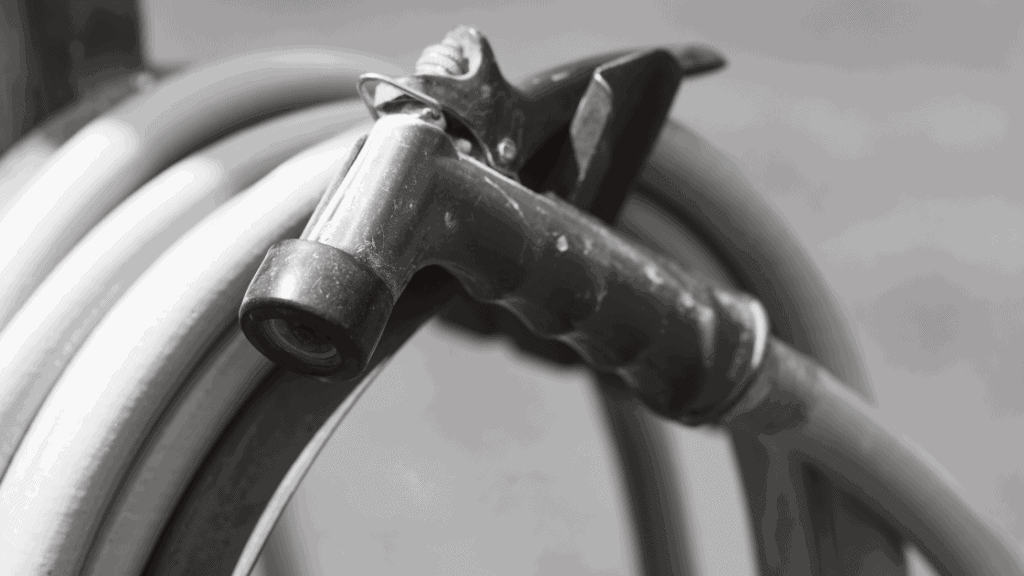
If you have a water hose running in your garden or garage, you already know what a spray nozzle is – a gun-like attachment with a trigger, that allows you to spray water ‘on demand’. There are many different spray nozzle designs – some have changeable attachments, which determine the spraying pattern. Attachments with a single water outlet hole can produce a thin stream with a very high pressure, while large attachments produce a broad, low pressure shower, much like a shower head.
Also for information on hose storage check out these articles:
Many spray nozzles have a convenient ‘lever’ on the side that is used to control the width and pressure of the stream – just like many shower heads. This makes spray nozzles very versatile and multi-functional.
Amazon offers some great spray nozzles and water wands as shown below.
What About Water Wands?
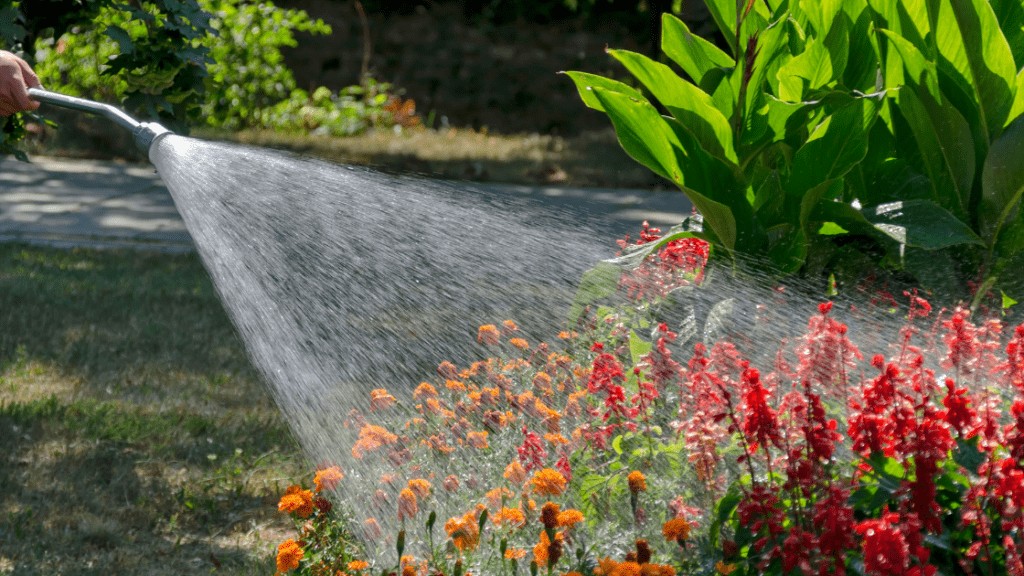
Water wands are simply spray nozzles, which are much longer – hence, the name – ‘wand’. They are also commonly referred to as watering wands, plant wands or spray wands. The length of the water wands allows you to comfortably water the surface of the soil directly, without having to crouch and without making the foliage of your plants wet – something that is not really possible by using a traditional spray nozzle.
The output of the watering wand is always designed to produce a low-pressure stream that doesn’t disturb the top of the soil and doesn’t cause splashing.
Are Spray Nozzles or Water Wands Better For Watering Plants?
Generally speaking, water wands are better when it comes to watering plants – they are designed specifically for plant watering in mind and allow you to quickly water a large number of garden plants without making a mess or wasting water.
They allow you to easily reach underneath the plant foliage and gently water the soil, while keeping the leaves dry. However, this doesn’t mean that spray nozzles can’t be used for plant watering purposes.
In fact, most gardeners still use spray nozzles and not watering wands. This is not usually because of a practical consideration, but simply because spray nozzles are generally more popular, cheaper, easier to move around and in the end do a good enough job of letting you control the water stream. Many people are also not aware that watering wands exist.
Potted Plants
Many gardens contain a large number of potted plants – this makes it easy to move the plants around and allows you to move tender, frost-sensitive plants back inside as the winter approaches.
It’s not practical to water pot containers from a distance with a spray nozzle – this usually leads to a lot of splashing, uneven watering and wasting water. Obviously, the problem is solved by crouching or bending over to lower your spray nozzle close enough to the surface of the soil, but if you have hundreds of pots this can get tiresome very quickly.
A water wand takes quick care of that problem and allows you to comfortably walk around while watering the pots.
On the other hand, watering of a large number of potted plants can also be achieved the ‘brute-force’ way by using a spray nozzle on top of the plants from a large distance. Of course this leads to getting the whole plant foliage wet and can in rare cases damage the delicate flowers of certain plants.
Pros and Cons of Watering Wands and Spray Nozzles
Here is a short summary of the pros and cons of spray nozzles and water wands, which you may want to consider before selecting the most suitable option for your particular needs:
Watering Wands
Pros: Easy to reach the top of the soil below the foliage. The length of the wand allows the water output to be near the ground, preventing splashing.
Cons: A bit more difficult to move around and maneuver. A common complaint is that cheap wands can leak from their trigger mechanism, causing discomfort and constant wetness of the handle. The stream of water is not that visible, making it hard to gauge how much water has been sprayed.
Spray Nozzles
Pros: Cheap, widely available, small and very versatile. Can be practical not only for watering, but for cleaning your garden and getting dirt off of the plant foliage.
Cons: Can be difficult to avoid getting the foliage of the plant wet, unless you bend over or crouch in order to lower your hand. Due to their spraying pattern, they can be wasteful of water.
Does a Heavy Water Stream Negatively Affect The Foliage of Plants?
Spray nozzles and water wands can produce a much more powerful stream of water when compared to the rain which the plants are naturally used to. However, this doesn’t necessarily pose a risk to the plant.
Most strong plants, or thin-bladed grasses can be watered with a heavy stream of water without any problems. Most flowering plants can also endure heavy spraying, despite how delicate their flowers may look.
It’s important to remember that rain falls vertically and plants have developed the shape of their leaves and flowers to be able to endure this vertical force. Watering with a strong water jet from the side can easily damage the flowers of many plants and cause problems with pollination and the formation of seeds.
It’s also important to be mindful of over-watering – most plants are negatively affected by waterlogged soils. Once the soil becomes too soggy, the oxygen availability to the roots is reduced, which can paradoxically lead to wilting.
Watering wands can more easily lead to over-watering, because the stream of water they produce isn’t as visible as the stream produced by spray nozzles. As a result, the visual impact of gauging how much water has been used is reduced.
Does a Wet Foliage Affect The Plant?
Obviously, all plants are used to rainfall. Wetting their leaves doesn’t usually cause problems, but it isn’t helpful either – almost none of the water can be absorbed through the leaves, and most of it will simply evaporate.
Sometimes, large droplets of water can act as lenses which concentrate sunlight, leading to tiny burn spots. However, this is rarely something that really needs to be kept in consideration.
Additional Tips For Watering Your Garden Properly
Spray nozzles and watering wands are just tools in your arsenal, and no amount of tools can make up for poor technique. Here are some easy, proven techniques to make watering your garden more efficient and easier:
Use mulch – A layer of mulch can make watering much more comfortable, by preventing any water run-offs. and reducing the watering frequency necessary to keep the soil moist. Mulch
layers also add some nutrition to the soil and are easily created by using waste products from nearby trees, such as dry leaves and broken branches. Grass clippings also work great. Mulch layers can also improve the look of your garden and make it look more natural.
Water at the right time – Watering in the mornings is almost always the best idea – plants require the highest amount of root-zone oxygen during the night, and water-logging the soil shortly before nightfall can greatly hinder their growth. This is most applicable to younger, smaller plants that haven’t yet developed their root system and require frequent watering to prevent wilting.
Water thoroughly and infrequency: Letting the top layer of the soil dry a bit and then watering profusely is a much better idea than constant, small, supplementary watering. This may seem counter-intuitive, but it perfectly mimics what happens in nature with infrequent, pouring rains.
Roots need oxygen to produce energy and most of this oxygen is absorbed in the top layers of the soil, which is naturally quite dry. If the top layer is constantly kept soggy and wet, the amount of oxygen available to the plant will be greatly reduced, which will quickly show as poor foliage development and unimpressive flowering.
